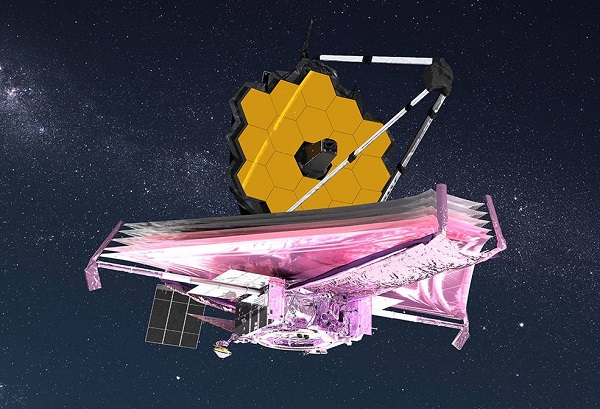
Washington, (Asian independent) The world’s premier space science observatory, the James Webb Telescope is all set to start full scientific operations, NASA has announced.
Launched on December 25, 2021, the $10 billion telescope is an international programme led by NASA, the European Space Agency and the Canadian Space Agency. The powerful next-generation telescope aims to solve mysteries in our solar system, look beyond distant worlds around other stars, and probe the mysterious structures and origins of our universe and our place in it.
“The months-long process of preparing NASA’s James Webb Space Telescope for science is now complete,” said Thaddeus Cesari, NASA’s Goddard Space Flight Center, in a statement on Monday.
“All of the 17 ways or ‘modes’ to operate Webb’s scientific instruments have now been checked out, which means that Webb has completed its commissioning activities and is ready to begin full scientific operations,” he added.
Each of Webb’s four scientific instruments has multiple modes of operation, utilising customised lenses, filters, prisms, and specialised machinery that needed to be individually tested, calibrated, and ultimately verified in their operational configuration in space before beginning to capture precise scientific observations of the universe.
The last of all 17 instrument modes to be commissioned was NIRCam’s coronagraph capability, which works to mostly block incoming starlight by inserting a mask in front of a target star, suppressing the target star’s relatively bright light to increase contrast and enable detection of fainter nearby companions such as exoplanets.
NIRCam, or the Near-Infrared Camera, is equipped with five coronagraphic masks — three round masks and two bar-shaped masks — that suppress starlight under different conditions of contrast and separation between the star and its companions.
In addition to capturing detailed imagery of the universe, NIRCam is the observatory’s main wavefront sensor that is used to fine-tune the telescope’s optics. It has this double duty by design due to having a comparatively wide field of view and possessing a suite of special internal optics that enable it to take out-of-focus images of stars and even take ‘selfie’ images of the primary mirror itself.
The team was able to start aligning the telescope’s optics even while the observatory was still cooling down, because of NIRCam’s ability to safely operate at higher-than-normal, but still cryogenic, operating temperatures.
“From the moment we first took images with NIRCam to start the telescope alignment process to the checkout of coronagraphy at the end of commissioning, NIRCam has performed flawlessly. Observers are going to be very pleased with the data they receive, and I am extremely happy with how 20 years of work by my team are now realised in amazing performance,” said Marcia Rieke, principal investigator for the NIRCam instrument and Regents Professor of Astronomy, University of Arizona.
Webb also produced the deepest and sharpest infrared image of the distant universe to date.
US President Joe Biden unveiled this image of galaxy cluster SMACS 0723, known as Webb’s First Deep Field, during a White House event on Monday.
Thousands of galaxies — including the faintest objects ever observed in the infrared — appeared in Webb’s view for the first time. The image of the vast universe covers a patch of sky approximately the size of a grain of sand held at arm’s length by someone on the ground.
On July 12, the telescope’s first full-colour images and spectroscopic data will be released, culminating Webb’s commissioning process, and marking the official beginning of its science mission, Cesari said.







